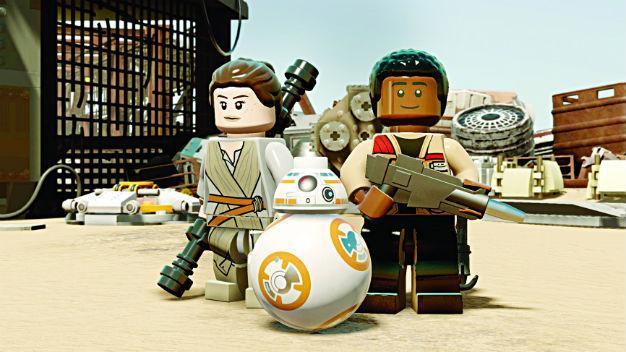Toy 'arms race' turning Lego violent: Study
WELLINGTON - Agence France-Presse
 Lego products are becoming increasingly violent as toymakers engage in an "arms race" to retain children's attention in the digital age, New Zealand researchers said on May 23.
Lego products are becoming increasingly violent as toymakers engage in an "arms race" to retain children's attention in the digital age, New Zealand researchers said on May 23.The University of Canterbury team said child's play was becoming more brutal, with a higher proportion of weapons appearing among Lego's building blocks and war-like scenarios featuring in its themed kit sets.
"The Lego company's products are not as innocent as they used to be," lead researcher Christoph Bartneck said.
"The violence in Lego products seems to have gone beyond just enriching game play."
In a peer-reviewed study published by the online journal PLOS ONE, the researchers concluded that Lego "showed significant exponential increases of violence over time".
While Denmark-based Lego has been making plastic building blocks since 1949, the study found its first weapons were issued in 1978 when a castle kit included swords, axes and lances.
An analysis found that weapons had steadily become more commonplace and were now included in 30 percent of Lego kits.
Bartneck said the percentage was probably higher as the data included only small, single-brick weapons, not items such the best-selling Star Wars' Death Star, which in itself is a giant planet-destroying ray blaster.
In addition, the research examined Lego catalogues from 1973 to 2015 and found the scenarios depicted in the company's kits had become more violent.
"Currently, around 40 percent of all pages contain some type of violence -- in particular, scenarios involving shooting and threatening behaviour have increased over the years," it found.
"The atmosphere of the violent acts is predominantly perceived as exciting."
The study said Lego was simply reflecting a broader trend in children's entertainment.
"To catch the attention of their customers, toy manufacturers are similarly locked in a metaphorical arms race for exciting new products," it said.
Bartneck also conducted separate research released in 2013 which found the number of angry expressions on Lego figures was rising as the number of happy faces declined.
Lego has radically reinvented itself since it almost went bankrupt in 2003-4 as electronic games threatened its future.
The privately-held company embarked on a bold strategy to embrace popular culture while shedding "non-core" activities such as clothing lines and the Legoland theme parks.
Instead it began selling themed kits linked to popular movie franchises such as Star Wars, Batman and Harry Potter.
It also created light-hearted computer games and animation along the same lines, paying off when "The Lego Movie" was a surprise hit in 2014.
The result has been 11 straight years of growth, with the company announcing earlier this year that net profit in 2015 soared 31 percent to 9.2 billion Danish kroner (1.2 billion euros; US$1.4 billion).
Lego said it was a record-breaking year for the brand, with an estimated 100 million children in 140 countries playing with Lego bricks and other toys.
Lego spokesman Troy Taylor said the company's products promoted a range of play activities such as construction, fantasy and conflict.
"As with other play types, conflict play is a natural part of a child's development," he said.
Taylor said weapons in Lego were always used for a broader purpose, such as saving the world, and character was emphasised over firepower.
"We always try and use humour where possible as it helps tone down the level of conflict."
















